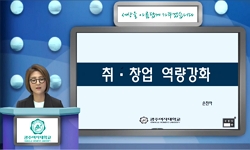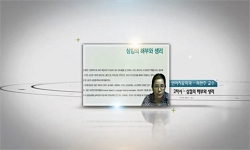Objective To determine physical activity, sleep, and nutrition patterns in individuals with cerebral palsy (CP) and investigate the association of Gross Motor Function Classification System (GMFCS) and age with these health behaviors. Methods A cross...
http://chineseinput.net/에서 pinyin(병음)방식으로 중국어를 변환할 수 있습니다.
변환된 중국어를 복사하여 사용하시면 됩니다.
- 中文 을 입력하시려면 zhongwen을 입력하시고 space를누르시면됩니다.
- 北京 을 입력하시려면 beijing을 입력하시고 space를 누르시면 됩니다.


The Formula for Health and Well-Being in Individuals With Cerebral Palsy: Cross-Sectional Data on Physical Activity, Sleep, and Nutrition
한글로보기https://www.riss.kr/link?id=A107001963
-
저자
Patrick G. McPhee (Department of Pediatrics, McMaster University, Hamilton, ON, Canada) ; Olaf Verschuren (University Medical Center Utrecht and De Hoogstraat Rehabilitation, Utrecht, The Netherlands) ; Mark D. Peterson (Department of Physical Medicine and Rehabilitation, University of Michigan-Medicine, Ann Arbor, MI, USA) ; Ada Tang (School of Rehabilitation Science, McMaster University, Hamilton, ON, Canada) ; Jan Willem Gorter (Department of Pediatrics, McMaster University, Hamilton, ON, Canada)

- 발행기관
- 학술지명
- 권호사항
-
발행연도
2020
-
작성언어
English
-
주제어
. ; Cerebral palsy ; Exercise ; Sleep ; Nutrition assessment
-
등재정보
KCI등재,SCOPUS
-
자료형태
학술저널
- 발행기관 URL
-
수록면
301-310(10쪽)
-
KCI 피인용횟수
0
- DOI식별코드
- 제공처
- 소장기관
-
0
상세조회 -
0
다운로드
부가정보
다국어 초록 (Multilingual Abstract)
Objective To determine physical activity, sleep, and nutrition patterns in individuals with cerebral palsy (CP) and investigate the association of Gross Motor Function Classification System (GMFCS) and age with these health behaviors.
Methods A cross-sectional study was conducted in an outpatient setting. Participants included adolescents and adults with CP (n=28; GMFCS level I–V; mean age 35.1±14.4 years). An Exercise Questionnaire or Leisure Time Physical Activity Questionnaire was used to measure physical activity in adolescents and adults, respectively. Sleep quality was measured using the Pittsburgh Sleep Quality Index (PSQI). An adapted version of the PrimeScreen questionnaire was used to assess nutrition. Linear regression analyses were performed to investigate the association between GMFCS and age with physical activity, sleep, and nutrition.
Results The average total physical activity was 29.2±30.0 min/day. Seventy-five percent of the participants had poor sleep quality (PSQI score >5). Seventy-one percent reported “fair” eating behaviors; none reported “excellent” eating behaviors. Neither GMFCS nor age were significantly associated with PSQI score, PrimeScreen score, or total physical activity. A negative correlation existed between sleep quantity (hr/night) and PSQI score (r=-0.66, p=0.01).
Conclusion The triad of health components, consisting of physical activity, sleep, and nutrition, was not associated with GMFCS or age in our sample of 28 individuals with CP, suggesting that these three health behaviors should be assessed during clinical encounters of CP in adolescents and adults at all levels of the GMFCS.
참고문헌 (Reference)
1 Ryan JM, "Waist circumference provides an indication of numerous cardiometabolic risk factors in adults with cerebral palsy" 95 : 1540-1546, 2014
2 Latimer AE, "The physical activity recall assessment for people with spinal cord injury : validity" 38 : 208-216, 2006
3 Verschuren O, "The formula for health and well-being in individuals with cerebral palsy : physical activity, sleep, and nutrition" 58 : 989-990, 2016
4 Buysse DJ, "The Pittsburgh Sleep Quality Index : a new instrument for psychiatric practice and research" 28 : 193-213, 1989
5 Surveillance of Cerebral Palsy in Europe, "Surveillance of cerebral palsy in Europe: a collaboration of cerebral palsy surveys and registers. Surveillance of Cerebral Palsy in Europe (SCPE)" 42 : 816-824, 2000
6 Verschuren O, "Sleep : an underemphasized aspect of health and development in neurorehabilitation" 113 : 120-128, 2017
7 Centers for Disease Control and Prevention, "Short sleep duration among US adults" Centers for Disease Control and Prevention
8 Martin Ginis KA, "Reliability and validity tests of the leisure time physical activity questionnaire for people with spinal cord injury" 93 : 677-682, 2012
9 Claridge EA, "Quantification of physical activity and sedentary time in adults with cerebral palsy" 47 : 1719-1726, 2015
10 Rifas-Shiman SL, "PrimeScreen, a brief dietary screening tool : reproducibility and comparability with both a longer food frequency questionnaire and biomarkers" 4 : 249-254, 2001
1 Ryan JM, "Waist circumference provides an indication of numerous cardiometabolic risk factors in adults with cerebral palsy" 95 : 1540-1546, 2014
2 Latimer AE, "The physical activity recall assessment for people with spinal cord injury : validity" 38 : 208-216, 2006
3 Verschuren O, "The formula for health and well-being in individuals with cerebral palsy : physical activity, sleep, and nutrition" 58 : 989-990, 2016
4 Buysse DJ, "The Pittsburgh Sleep Quality Index : a new instrument for psychiatric practice and research" 28 : 193-213, 1989
5 Surveillance of Cerebral Palsy in Europe, "Surveillance of cerebral palsy in Europe: a collaboration of cerebral palsy surveys and registers. Surveillance of Cerebral Palsy in Europe (SCPE)" 42 : 816-824, 2000
6 Verschuren O, "Sleep : an underemphasized aspect of health and development in neurorehabilitation" 113 : 120-128, 2017
7 Centers for Disease Control and Prevention, "Short sleep duration among US adults" Centers for Disease Control and Prevention
8 Martin Ginis KA, "Reliability and validity tests of the leisure time physical activity questionnaire for people with spinal cord injury" 93 : 677-682, 2012
9 Claridge EA, "Quantification of physical activity and sedentary time in adults with cerebral palsy" 47 : 1719-1726, 2015
10 Rifas-Shiman SL, "PrimeScreen, a brief dietary screening tool : reproducibility and comparability with both a longer food frequency questionnaire and biomarkers" 4 : 249-254, 2001
11 Christensen D, "Prevalence of cerebral palsy, co-occurring autism spectrum disorders, and motor functioning : Autism and Developmental Disabilities Monitoring Network, USA, 2008" 56 : 59-65, 2014
12 Maenner MJ, "Prevalence of cerebral palsy and intellectual disability among children identified in two U.S. National Surveys, 2011-2013" 26 : 222-226, 2016
13 Maher CA, "Physical and sedentary activity in adolescents with cerebral palsy" 49 : 450-457, 2007
14 World Health Organization, "Physical activity" World Health Organization
15 Hutton JL, "Outcome in cerebral palsy: life-expectancy" 18 : 419-422, 2008
16 Shortland A, "Muscle deficits in cerebral palsy and early loss of mobility: can we learn something from our elders?" 51 (51): 59-63, 2009
17 Kruse M, "Lifetime costs of cerebral palsy" 51 : 622-628, 2009
18 Nooijen CF, "Inactive and sedentary lifestyles amongst ambulatory adolescents and young adults with cerebral palsy" 11 : 49-, 2014
19 McCarty SF, "Improvement of sleep apnea in a patient with cerebral palsy" 80 : 540-542, 2001
20 Ryan JM, "Habitual physical activity and cardiometabolic risk factors in adults with cerebral palsy" 35 : 1995-2002, 2014
21 McPhee PG, "Fatigue and its relationship with physical activity, age, and body composition in adults with cerebral palsy" 59 : 367-373, 2017
22 van de Mortel TF, "Faking it : social desirability response bias in self-report research" 25 (25): 40-48, 2008
23 Maltais DB, "Factors related to physical activity in adults with cerebral palsy may differ for walkers and nonwalkers" 89 : 584-597, 2010
24 Verschuren O, "Exercise and physical activity recommendations for people with cerebral palsy" 58 : 798-808, 2016
25 McPhee PG, "Emerging evidence for accelerated ageing and cardiovascular disease in individuals with cerebral palsy" 51 : 525-531, 2019
26 Binay Safer V, "Effects of botulinum toxin serotype A on sleep problems in children with cerebral palsy and on mothers sleep quality and depression" 21 : 331-337, 2016
27 Sellers D, "Development and reliability of a system to classify the eating and drinking ability of people with cerebral palsy" 56 : 245-251, 2014
28 Donkervoort M, "Determinants of functioning of adolescents and young adults with cerebral palsy" 29 : 453-463, 2007
29 Brunton LK, "Description of exercise participation of adolescents with cerebral palsy across a 4-year period" 22 : 180-187, 2010
30 Palisano RJ, "Content validity of the expanded and revised Gross Motor Function Classification System" 50 : 744-750, 2008
31 Peterson MD, "Chronic conditions in adults with cerebral palsy" 314 : 2303-2305, 2015
32 Berg K, "Body composition and nutrition of school children with cerebral palsy" 204 (204): 41-52, 1970
33 Whitney DG, "BMI does not capture the high fat mass index and low fatfree mass index in children with cerebral palsy and proposed statistical models that improve this accuracy" 43 : 82-90, 2019
34 McPhee PG, "Associations of non-invasive measures of arterial structure and function, and traditional indicators of cardiovascular risk in adults with cerebral palsy" 243 : 462-465, 2015
35 Martin AA, "Arterial structure and function in ambulatory adolescents with cerebral palsy are not different from healthy controls" 2012 : 168209-, 2012
36 Mukherjee S, "An official American Thoracic Society statement: the importance of healthy sleep. Recommendations and future priorities" 191 : 1450-1458, 2015
37 Peterson MD, "Age-related trends in cardiometabolic disease among adults with cerebral palsy" 61 : 484-489, 2019
동일학술지(권/호) 다른 논문
-
Unilateral Diaphragm Paralysis Associated With Neurosyphilis: A Case Report
- 대한재활의학회
- 허성철
- 2020
- KCI등재,SCOPUS
-
- 대한재활의학회
- Mihyang Han
- 2020
- KCI등재,SCOPUS
-
Ultrasound Imaging of the Trunk Muscles in Acute Stroke Patients and Relations With Balance Scales
- 대한재활의학회
- Yunho Kim
- 2020
- KCI등재,SCOPUS
-
- 대한재활의학회
- Ji Seon Hong
- 2020
- KCI등재,SCOPUS
분석정보
인용정보 인용지수 설명보기
학술지 이력
| 연월일 | 이력구분 | 이력상세 | 등재구분 |
|---|---|---|---|
| 2023 | 평가예정 | 해외DB학술지평가 신청대상 (해외등재 학술지 평가) | |
| 2020-01-01 | 평가 | 등재학술지 유지 (해외등재 학술지 평가) |  |
| 2011-06-28 | 학술지명변경 | 한글명 : 대한재활의학회지 -> Annals of Rehabilitation Medicine |  |
| 2011-01-01 | 평가 | 등재학술지 유지 (등재유지) |  |
| 2009-01-01 | 평가 | 등재학술지 유지 (등재유지) |  |
| 2007-01-01 | 평가 | 등재학술지 유지 (등재유지) |  |
| 2005-01-01 | 평가 | 등재학술지 유지 (등재유지) |  |
| 2002-07-01 | 평가 | 등재학술지 선정 (등재후보2차) |  |
| 2000-01-01 | 평가 | 등재후보학술지 선정 (신규평가) |  |
학술지 인용정보
| 기준연도 | WOS-KCI 통합IF(2년) | KCIF(2년) | KCIF(3년) |
|---|---|---|---|
| 2016 | 0.19 | 0.19 | 0.17 |
| KCIF(4년) | KCIF(5년) | 중심성지수(3년) | 즉시성지수 |
| 0.19 | 0.19 | 0.397 | 0.01 |




 KCI
KCI





